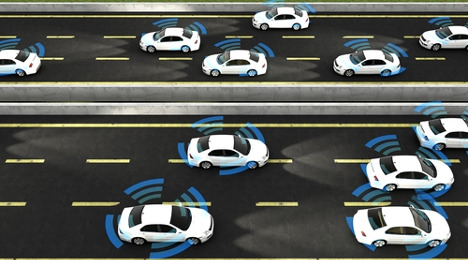V2V communication an aftermarket boon for dealers?

By subscribing, you agree to receive communications from Auto Remarketing and our partners in accordance with our Privacy Policy. We may share your information with select partners and sponsors who may contact you about their products and services. You may unsubscribe at any time.
CARY, N.C. –
The U.S. Department of Transportation announced a proposed rule Tuesday that would require automakers include vehicle-to-vehicle communication on new vehicles.
The DOT said in a news release that this Notice of Proposed Rulemaking, in short, is designed to foster V2V communication that would help prevent crashes by allowing cars to “talk” to each other.
Full implementation of this rule — which, again, is just a proposal at this point — would be years away and would only include new vehicles, not existing vehicles.
But during a DOT conference call with the media on Tuesday, Mark Rosekind of the National Highway Traffic Safety Administration said there’s some potential benefit for the aftermarket.
“The requirement focuses on new vehicles, but we believe there will be a pretty strong aftermarket interest in doing this, even without the requirement, just because of the safety benefits,” said Rosekind, NHTSA’s Administrator.
In a story included in its enewsletter and shared with Auto Remarketing, the Specialty Equipment Market Association — more commonly known as SEMA — explained the Dedicated Short-Range Communications system that would allow vehicles to communicate back-and-forth.
Subscribe to Auto Remarketing to stay informed and stay ahead.
By subscribing, you agree to receive communications from Auto Remarketing and our partners in accordance with our Privacy Policy. We may share your information with select partners and sponsors who may contact you about their products and services. You may unsubscribe at any time.
And not just new cars.
“V2V devices would speak the same language through standardized messaging developed with industry. This would also allow aftermarket companies to market products to retrofit older cars,” SEMA said in the enewsletter.
In other words — as explained in a voicemail from Stuart Gosswein, SEMA's senior director of federal government affairs — there is no requirement for older cars to use this technology, but there certainly would be the opportunity.
Dealer benefits?
Of course, it may be a while before those opportunities are realized by car dealers.
Reached Tuesday afternoon by Auto Remarketing, Cars.com editor-in-chief Patrick Olsen said that in the long term, this could be a benefit to dealers selling this technology as an aftermarket benefit to consumers.
However, don’t expect much of short-term lift. The value of V2V technology will have to be proven to consumers before they jump in. Typically, Olsen said, consumers haven’t rushed to such technology unless it has been mandated by government.
In other words, it’s a wait-and-see situation as to how this might provide additional revenue for dealers.


